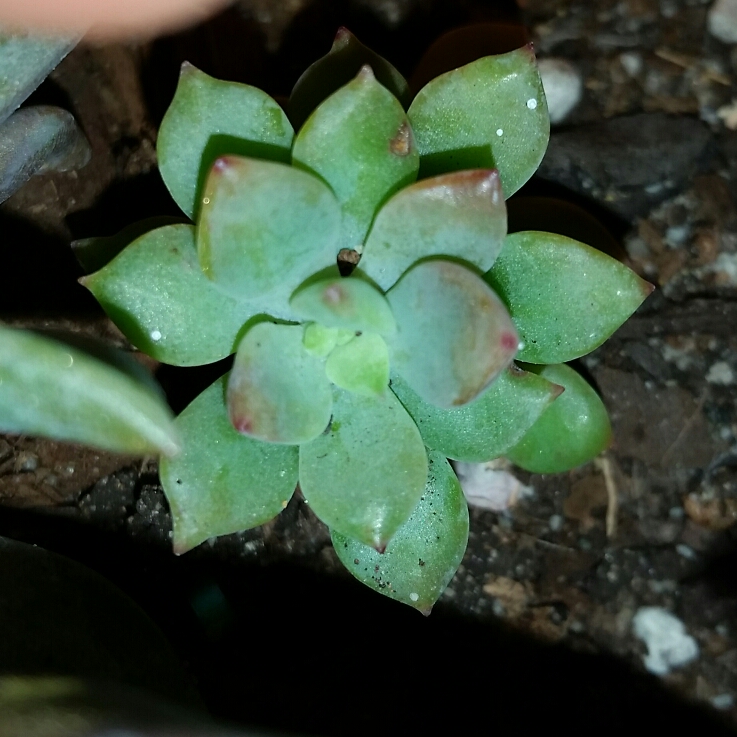
x Graptosedum Joan Steele
Graptosedum 'Joan Steele'
Graptosedum has a clump-forming habit and grows to a height of approximately 15cm. They are generally easy to propagate, by seeds, leaf cuttings or offsets. If a leaf breaks off, it is likely to root and start a new plant. It can then produce a new rosette quickly. This is an unknown variety.
Contributed by @Catherine157
-
Full sun
-
Very little water
-
Not Frost hardy
-
Light and free draining
Common name
Graptosedum 'Joan Steele'
Latin name
x Graptosedum Joan Steele
type
Succulent
family
Crassulaceae
ph
5.0 - 7.0 Acid - Neutral
Plant & bloom calendar
-
Best time to plant
-
When the plant will bloom
full grown dimensions
 0.30 M
0.15 M
0.30 M
0.15 M
x Graptosedum Joan Steele
Graptosedum has a clump-forming habit and grows to a height of approximately 15cm. They are generally easy to propagate, by seeds, leaf cuttings or offsets. If a leaf breaks off, it is likely to root and start a new plant. It can then produce a new rosette quickly. This is an unknown variety.
Planting
From Early Spring TO Early Spring
They can be propagated easily by separating offsets, but also by leaf cuttings, and by seed if they are not hybrids. Succulents need a warm, sunny well-drained position to develop their foliage colour. Most succulents will be grown in containers and pots and they will need good drainage. Add coarse grit to soil-less compost and repot every year in late-spring. Don't worry about damaging the roots when re-potting: these plants tolerate disturbance well.
Flowering
From Early Spring TO Late Summer
Flowers on short stalks (cymes) arise from compact rosettes of succulent fleshy, often brightly coloured leaves. Species are polycarpic, meaning that they may flower and set seed many times over the course of their lifetimes










